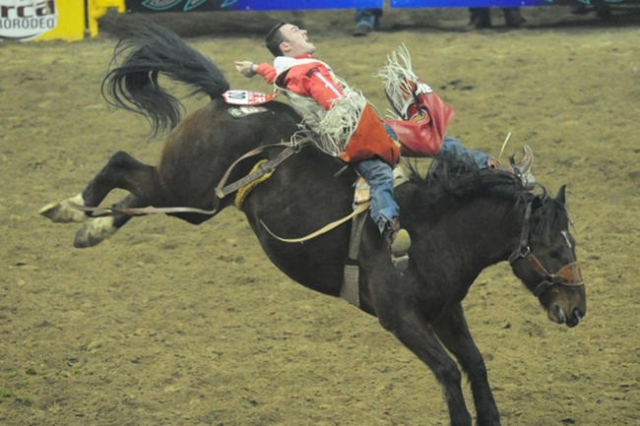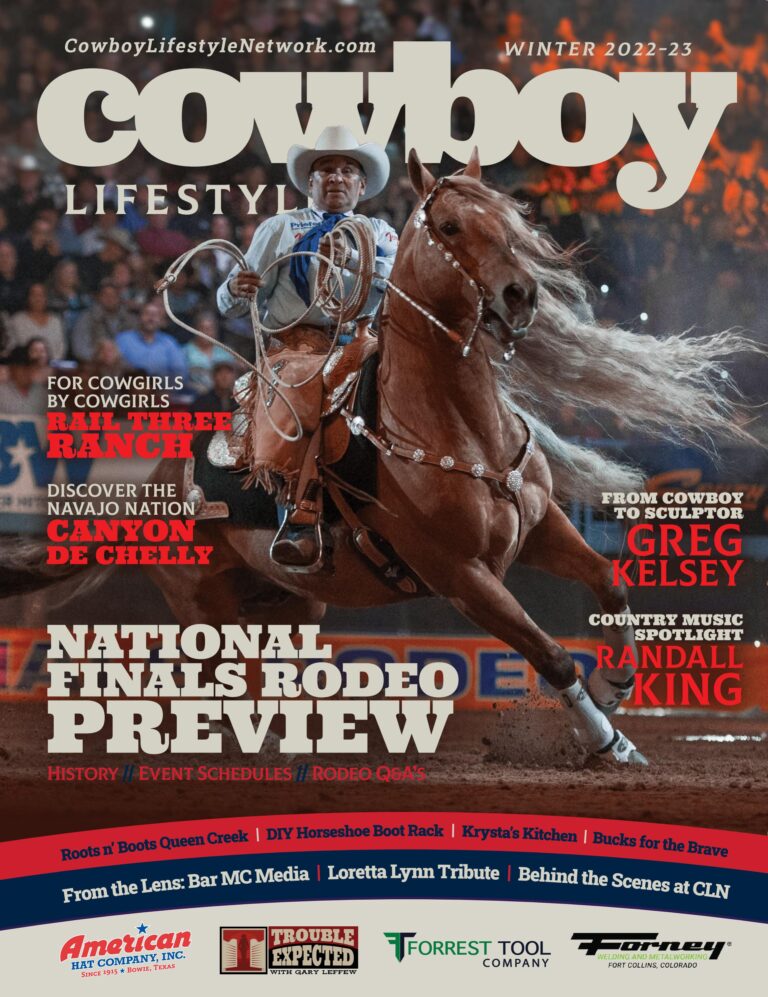Nfr bull riding injury: bull riders are at high risk of suffering serious injuries due to the unpredictable nature of the sport and the size and power of the animals they ride. Bull riding is undoubtedly one of the most intense and dangerous sports on the planet.
It involves a rider climbing onto the back of a 2,000-pound bull and attempting to stay there for at least 8 seconds while the animal tries everything in its power to buck him off. Due to the physical demands and the unpredictable nature of bull riding, riders are at high risk of sustaining injuries that range from minor bruises to life-threatening injuries.
In this article, we will explore some of the most common injuries suffered by bull riders, their causes, and how they can be prevented.

Credit: www.reviewjournal.com
The Grueling World Of Nfr Bull Riding
Nfr bull riding is a grueling sport that demands extreme physical endurance and mental fortitude. It’s a thrilling spectacle that draws massive crowds, lured by the excitement and the danger. The injuries suffered by bull riders can be severe and, in some cases, life-threatening.
Broken bones, internal organ damage, and concussion are common injuries in this brutal sport. Despite the risks involved, riders continue to push themselves to the limit and defy gravity with heart-stopping rides that thrill audiences worldwide. But for these daredevil athletes, it’s a way of life, and they wouldn’t have it any other way.
Injuries are a part of the game, but a true rodeo cowboy will always dust themselves off and get back on that bull.
The Perils Of Nfr Bull Riding
Nfr (national finals rodeo) bull riding is not for the faint-hearted. It’s a daredevil performance that requires courage and strength. The bull riders subject themselves to immense risk and injury. Every bulls’ move has the potential to cause harm or even death.
The riders often suffer severe injuries, including concussions, broken bones, and internal injuries. Injuries from bull riding can cause long-term health complications. The bulls are always unpredictable, and the riders are at their mercy. The injuries associated with nfr bull riding are dangerous and sometimes fatal.
Despite all this, the thrill and excitement of the sport continue to draw numerous fans and participants. The risks involved in nfr bull riding are incredibly high, and those who dare to participate display a level of bravery that is unmatched.
The Nature Of Bull Riding Injuries
Bull riding is considered one of the most dangerous sports that exist. Nfr bull riding is even more so. The injuries that riders sustain during these events can be severe. One of the most common and life-threatening injuries is a traumatic brain injury.
Concussions, fractures, and internal injuries to the organs are also common. Some riders even suffer from paralysis or other life-altering injuries. Despite taking safety precautions, injuries in bull riding are almost inevitable. The partnership between the rider and bull and the intense nature of the sport makes for a high risk of injury.
It is essential to recognize and respect these dangers, and measures must be taken to mitigate the risks. However, even with the dangers presented, bull riding remains a thrilling and exciting sport to watch for many people.
The Psychological Effects Of Bull Riding Injuries
Bull riding injuries can have long-term psychological effects on athletes. The adrenaline rush of the rodeo is addictive and tempting for the competitors. Every time a bull rider mounts the animal, they expose themselves to the possibility of severe injury and even death.
Such risks can induce anxiety, fear, and other mental health issues that can linger for years. If a serious accident occurs and the athlete is unable to perform again, depression and a sense of loss can set in. The physical scars may disappear, but the emotional scars are more enduring.
It is crucial to acknowledge and facilitate the healing of both mental and physical wounds. Western sports associations should prioritize the well-being of their athletes and provide adequate support to manage bull riding injuries.
The Road To Recovery
Bull riding is an inherently dangerous sport. It involves adrenaline-pumping, high-risk rides on large, powerful animals. Every year, many athletes from the national finals rodeo (nfr) suffer serious injuries, some of which can be career-ending. Coping with the aftermath of such injuries can be challenging and demanding, both physically and emotionally.
The road to recovery can be a long and rigorous process, requiring patience, persistence, and dedication. Rehabilitation typically involves a range of treatments, including pain management, physical therapy, and psychological counseling. Navigating this process successfully requires a strong support system, focused goals, and a commitment to returning to the sport.
While bull riding injuries can be devastating, with the right mindset and approach, it is possible to come back stronger and better than ever.
The Future Of Nfr Bull Riding
The sport of bull riding has always been one of the most thrilling and challenging events in the rodeo world. However, with the rise of bull riding injuries, the national finals rodeo (nfr) has implemented a number of measures to reduce the risks involved in this high-stakes competition.
These include stricter regulations for bulls and their handlers, as well as mandatory safety gear for riders. Although these measures have been effective in reducing the number of injuries, the nfr continues to work diligently to further improve the sport’s safety standards.
With these new advancements in place, the nfr’s bull riding community can look forward to a safer, more exciting future.
Frequently Asked Questions For Nfr Bull Riding Injury
What Kind Of Injuries Can Bull Riders Sustain?
Bull riders can sustain various injuries, including broken bones, sprains, concussions, and puncture wounds. These injuries can be severe and require immediate medical attention.
How Dangerous Is Bull Riding?
Bull riding is considered to be one of the most dangerous sports in the world. Riders are at risk of serious injuries and even death due to the unpredictable nature of the animals they ride.
Do Bull Riders Wear Protective Gear?
Yes, bull riders wear protective gear, including helmets, vests, and pads, to minimize the risk of injury. However, even with this gear, injuries can still occur.
How Can Bull Riding Injuries Be Prevented?
Bull riding injuries can be prevented by wearing appropriate protective gear, practicing proper technique and rodeo safety guidelines, and only riding well-trained bulls.
What Should You Do If You Get Injured During Bull Riding?
If you get injured during bull riding, seek immediate medical attention. It’s crucial to treat the injury as soon as possible to prevent further complications or long-term damage.
Can Anyone Participate In Bull Riding?
No, not anyone can participate in bull riding. The sport requires rigorous physical training and experience. Only certified riders are allowed to participate in professional bull riding competitions.
Conclusion
Nfr bull riding is a highly dangerous sport, and with it comes the very real risk of serious injury. However, the rodeo professionals and athletes know the risks and still continue to participate, driven by their love for the sport.
While we can never completely eliminate the risk of injury, there are ways we can make it safer. By introducing stricter safety guidelines and addressing the mental health impact of injuries, we can ensure that bull riding remains a thrilling sport while minimizing the risks.
Bull riding injuries have become more regulated and addressed, making it safer and more enjoyable for both the participants and their fans. Ultimately, whether it’s the raw athleticism or the adrenaline rush that draws you to bull riding, we can all agree that the passion and dedication of the riders and cowboys is truly inspiring.

